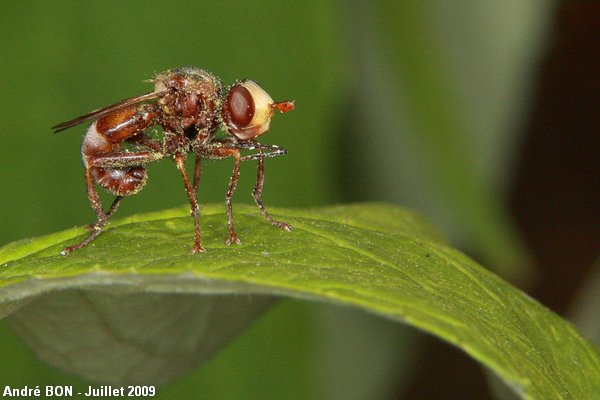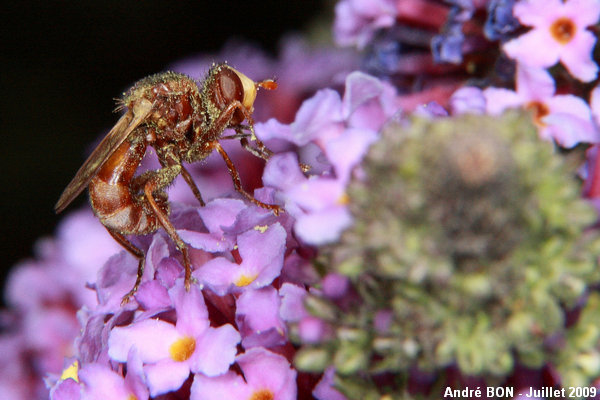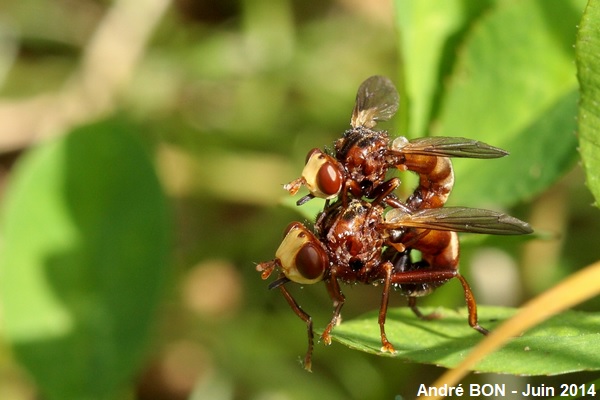


| Sicus ferrugineus (Linnaeus, 1761) |



|
|
Scientific name: Sicus ferrugineus (Linnaeus, 1761) Common name: Other names: Other scientific names: Conops cessans, Conops ferrugineus and Sicus cessans. French name: Order: Diptera Family: Conopidae Wingspan : 9 to 14 mm (the body size depends of the size of the host Bumblebee in which the larva has grown). Biotope: Areas with flowers and Bumblebees. Geographic area: Europe, North Africa, Asia. Observation period : May to September. |
Sicus ferrugineus, like other Conopidae is characterized by its large head and its abdomen which is curved under. The body is a rust colour, the front of the head is pale yellow. The base of the wings is yellowish red. Females lay eggs in flight on Bumblebees and larvae enter into the body where they grow. The eggs have small hooks to attach to the Bumblebee's hairs. You can often see adults on flowers in summer. Sicus ferrugineus over winters as a pupa inside the body of the dead Bumblebee. |
| [To know more about the Sicus ferrugineus] [Next picture] [Top] |

|
I have observed this Sicus ferrugineus on the Buddleia and a little birdie told me that it has enjoyed feeding on pollen and on nectar. |
| [To know more about the Sicus ferrugineus] [Next picture] [Previous picture] [Top] |

|
One other big advantage of the Buddleia is that it attracts many Bumblebees. It is then easy for females to find future victims to lay the eggs on. |
| [To know more about the Sicus ferrugineus] [Previous picture] [Top] |

|
Mating. |